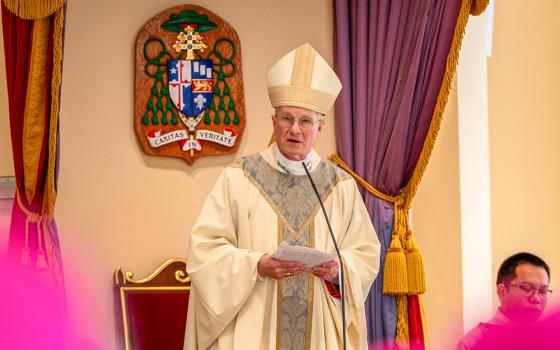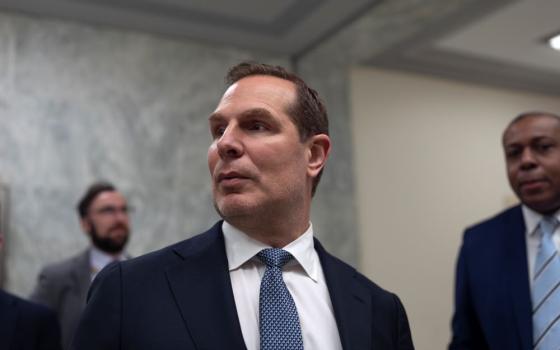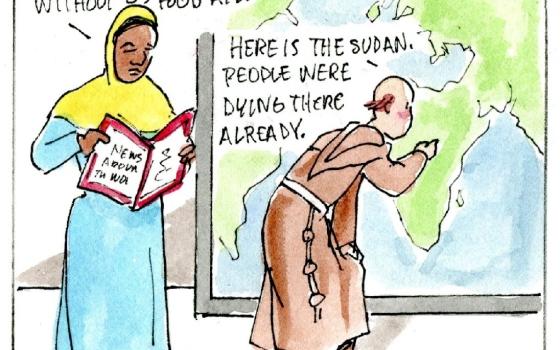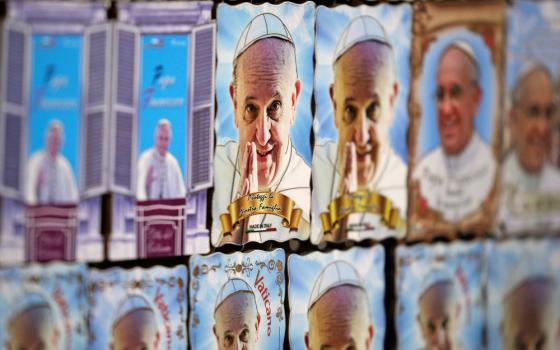Pope Francis meets U.S. President Donald Trump during a private audience at the Vatican May 24, 2017. (CNS/Paul Haring)
In 2022, the Vatican's foreign minister didn't mince words that the Holy See enjoyed better relations with the Biden administration than the Trump regime.
"Frankly speaking, I think we found that we didn’t see quite as eye-to-eye with the previous administration as we do with this one," Archbishop Paul Gallagher said in an interview with America magazine.
The archbishop observed that, as with any government, there will be areas of challenges and possibilities for cooperation.
During the Biden era, there were usual differences over abortion that any Democratic administration faces in dealing with the Holy See. But the world's leading superpower and the world's smallest state found itself most unaligned on the ongoing wars in Ukraine and Gaza.
Pope Francis has insistently called for a cease-fire in both conflicts. Meanwhile, the Biden administration has provided critical funding to keep both alive.
Even so, during the last four years, the collaboration between the Holy See and the United States has focused on the return of Ukrainian children kidnapped by Russia, migration and environmental concerns.
As President-elect Donald Trump prepares to return to office, it's worth considering what Vatican-U.S. relations might look like during the four years ahead.
Callista Gingrich served as U.S. ambassador to the Vatican during Donald Trump's first term as U.S. president. (CNS/Bob Roller)
During his first term, Trump tapped Callista Gingrich to serve as his representative here — a period in which both the ambassador and her much better known husband, Newt Gingrich, were a regular presence on the Roman social scene.
Callista developed a reputation as a respected collaborator among the growing number of female ambassadors to the almost all-male run Vatican. And in a period when the two administrations found common ground on few issues, she successfully made human trafficking her signature cause.
Should a future Trump appointee want to follow a similar playbook, however, they may find themselves hobbled by the controversies surrounding the president-elect's own sexual assault convictions, as well as the allegations against some of his potential cabinet members.
When it comes to mediating an end to Russia's aggression against Ukraine, Trump has pledged to stop the conflict in "one day" of his presidency. The Vatican's top diplomat, Cardinal Pietro Parolin, has expressed some skepticism, saying there aren't "magic solutions" to end the war. But should the U.S. begin to cut off its supply of weapons or funding to beleaguered Ukraine, one shouldn't expect protest or disappointment from the Holy See, either.
Advertisement
While the globalist pope has prioritized engagement with China as a signature theme of his papacy, Trump is expected to pursue isolationist policies that will likely deepen the divides between the U.S. and the Vatican. And on immigration, where the president-elect has promised to pursue the "largest deportation program in American history," it's fair to expect considerable pushback from the pope who has recently described it as a "sin" and "evil" to reject migrants.
At a recent lecture in Poland, Archbishop Gallagher offered an extensive overview of the Holy See's diplomatic mission, which included prioritizing conflict resolution, defending the right to life and religious freedom, migration and the environment
Based on that list, it would seem a second Trump term offers a mixed bag of areas of convergence and opposition, as with any administration.
But, the archbishop noted, in his address, the Holy See's work should be defined by a spirit of dialogue and humility. Accordingly, when it comes to the four years ahead, temperament may prove to be the greatest divergence of all.
Reporting from Rome was made possible in part by the generosity of Joan and Bob McGrath.






